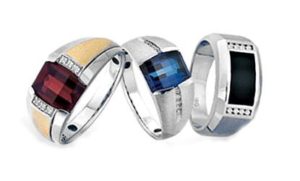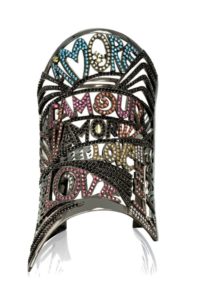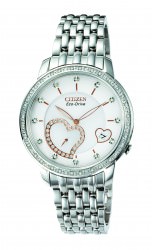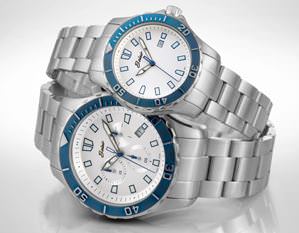Marketing Value Points
The consumer buzzword is “value” and it’s not about price; value is about what you’re getting for the price. Quality, style, novelty, personal meaning, and a custom experience all create the value today’s consumers want.
 Among the market’s top sellers are fashion styles with an emphasis on color, sterling silver, bridal with color gems and diamond and silver, and custom/personalized designs. The trend for statement cuff bracelets is inspiring designs like structured collars for the neck and streamlined, wide band finger cuffs. There’s greater use of a variety of materials in design, most notably new, affordable alloys, as well as a blend of precious and non-precious elements.
Among the market’s top sellers are fashion styles with an emphasis on color, sterling silver, bridal with color gems and diamond and silver, and custom/personalized designs. The trend for statement cuff bracelets is inspiring designs like structured collars for the neck and streamlined, wide band finger cuffs. There’s greater use of a variety of materials in design, most notably new, affordable alloys, as well as a blend of precious and non-precious elements.
The key: Understanding what’s important to your customer. Market consumer-specific value points. Consumers will spend more when they believe that they really are getting more for what they spend.
There are many ways to fortify the value proposition, like empowering customers with custom options. How  companies manage customization will dictate their ability to attract and retain customers and generate profit. Many manufacturers give choices in metals and gems, stone size, and setting style in collections, typically with quick turnaround time, helping to close sales. Consult with your vendors to learn what’s possible.
companies manage customization will dictate their ability to attract and retain customers and generate profit. Many manufacturers give choices in metals and gems, stone size, and setting style in collections, typically with quick turnaround time, helping to close sales. Consult with your vendors to learn what’s possible.
Jewelers who promote themselves as stylists, trends trackers, and fashion-consultants for their customers add tremendous value in their service. To succeed in marketing fashion, jewelers need a good ongoing resource for identifying usable trends, advises image consultant Cynthia Sliwa, Hermosa Beach, California, co-author of Jewelry Savvy:The Ultimate Guide to the Selection, Care & Creative Recycling of Jewelry. “Sometimes there’s a member of the store staff who loves fashion and is happy to keep abreast of the latest developments. Style advice can be invaluable.”
 Sliwa notes that jewelers should examine trends in the context of how they mesh with their successful niche categories of jewelry in their store. “Personal familiarity with the tastes of the customers will help retailers identify the trends and merchandise that will resonate with their best customers”. She encourages jewelers contact an image consultant through the Association of Image Consultants International for style-focused events. Suggests Michelle Orman, marketing consultant from Brooklyn, New York: “Use technology, lifestyle magazines and collaborative events with fashionable non-competing retailers to finesse your style status. Mark pages of fashion magazines where items similar to what you carry are featured or keep a press book out for customer reference.”
Sliwa notes that jewelers should examine trends in the context of how they mesh with their successful niche categories of jewelry in their store. “Personal familiarity with the tastes of the customers will help retailers identify the trends and merchandise that will resonate with their best customers”. She encourages jewelers contact an image consultant through the Association of Image Consultants International for style-focused events. Suggests Michelle Orman, marketing consultant from Brooklyn, New York: “Use technology, lifestyle magazines and collaborative events with fashionable non-competing retailers to finesse your style status. Mark pages of fashion magazines where items similar to what you carry are featured or keep a press book out for customer reference.”
 Swarovski, a Plumb Club manufacturer, is a pioneer in promoting the fusion of fashion and accessories, producing for more than a decade of trends research for its customers and the trade. Swarovski’s 2013 GemVisions hails consumers’ need to celebrate as the force behind the changing attitudes, dreams and desires of jewelry buyers. This key direction underscores the spirit of celebration that is an integral part of the jewelry-buying experience, highlighting the different impulses that drive the desire for gems and jewels. Because the market rapidly changes, partnerships are critical, says Erwin Wieser, vice president operations Americas for Swarovski. “Each year we launch innovations to inspire designers and use these to push the boundaries of creativity and craftsmanship.”
Swarovski, a Plumb Club manufacturer, is a pioneer in promoting the fusion of fashion and accessories, producing for more than a decade of trends research for its customers and the trade. Swarovski’s 2013 GemVisions hails consumers’ need to celebrate as the force behind the changing attitudes, dreams and desires of jewelry buyers. This key direction underscores the spirit of celebration that is an integral part of the jewelry-buying experience, highlighting the different impulses that drive the desire for gems and jewels. Because the market rapidly changes, partnerships are critical, says Erwin Wieser, vice president operations Americas for Swarovski. “Each year we launch innovations to inspire designers and use these to push the boundaries of creativity and craftsmanship.”
A big part of the value equation is to what extent jewelers are part of the solution in making the world a better place, tells Liz Chatelain, president of MVI Marketing in Paso Robles, California. “Millennial consumers are picking up the ethical charge. This well-educated set wants information on issues like sustainability and ethical business practices in the products they buy, including diamonds, gold, and other precious gems and metals. While the percentage of jewelry consumers who care about these issues is small, it has grown from negligible in the last decade to 7 percent last year in Jewelry Consumer Opinion Council research.”
Touting products that are eco friendly engage customers who care about these issues. Take Plumb Club member  Citizen, the leading U.S. mid-priced watch brand, who revolutionized the watch industry with its Eco-Drive technology. Initiated almost four decades ago, Eco-Drive harnesses the power of light from any natural or artificial source and converts it into energy stored in a permanently rechargeable lithium ion cell. Citizen continues to push its know-how, recently incorporating radio-controlled atomic timekeeping and satellite wave technologies in its collections.
Citizen, the leading U.S. mid-priced watch brand, who revolutionized the watch industry with its Eco-Drive technology. Initiated almost four decades ago, Eco-Drive harnesses the power of light from any natural or artificial source and converts it into energy stored in a permanently rechargeable lithium ion cell. Citizen continues to push its know-how, recently incorporating radio-controlled atomic timekeeping and satellite wave technologies in its collections.
Promote affiliations with groups like the Responsible Jewellery Council. Tout that your products come from companies certified by RJC, like Plumb Club members Richline, Tache, Interjewel/Mercury Ring, and Rosy Blue. RJC certified companies adhere to a Code of Practices for business ethics, human rights, and social and environmental performance. Certified members have the benefit of recognition against an international certification system, supporting their own reputations and enhancing consumer confidence in the jewelry supply chain.
Also trending is a return to Made in the USA, with a push for “insourcing” or “reshoring” the latest buzzwords. According to the global business strategy firm, The Boston Consulting Group (BCG), America is expected to undergo a manufacturing renaissance in the next five years as the wage gap with China shrinks and certain U.S. states become some of the least expensive locations for manufacturing in the developed world. While jewelers look to lower risks, there’s a desire for American made goods as symbols of patriotism and job creation.
 Companies that promote Made in America include Plumb Club members Belair Time, Benchmark, I.B. Goodman, Greenwood Group, IDD, Ostbye, Quality Gold, Richline, and Waldman Diamond. The story of Belair, for example, fits the narrative as the last remaining facility assembling quartz analog watches and movements in the United States, labeled Made in the USA of Swiss parts.
Companies that promote Made in America include Plumb Club members Belair Time, Benchmark, I.B. Goodman, Greenwood Group, IDD, Ostbye, Quality Gold, Richline, and Waldman Diamond. The story of Belair, for example, fits the narrative as the last remaining facility assembling quartz analog watches and movements in the United States, labeled Made in the USA of Swiss parts.
People want to make smart buying decisions and playing up the quality, workmanship and value factors like customization, fashion consultation, eco-friendly/fair trade practices and American made are important to consumers today.










